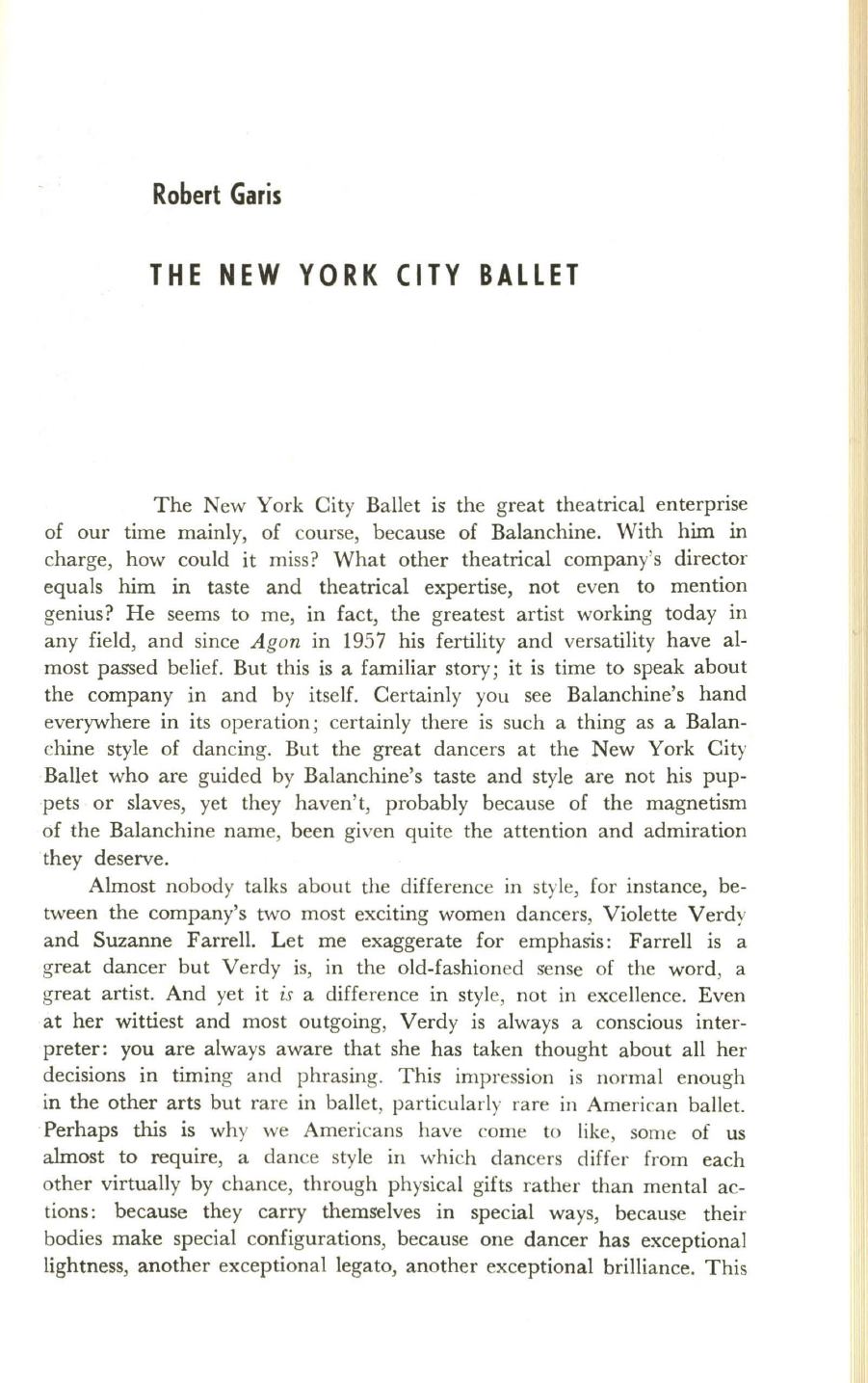
Robert Garis
THE NEW YORK CITY BALLET
The New York City Ballet is the great theatrical enterprise
of our time mainly, of course, because of Balanchine. With him in
charge, how could it miss? What other theatrical company's director
equals him in taste and theatrical expertise, not even to mention
genius? He seems to me, in fact, the greatest artist working today in
any field, and since
Agon
in 1957 his fertility and versatility have al–
most passed belief. But this is a familiar story; it is time to speak about
the company in and by itself. Certainly you see Balanchine's hand
everywhere in its operation; certainly there is such a thing as a Balan–
chine style of dancing. But the great dancers at the New York City
.Ballet who are guided by Balanchine's taste and style are not his pup–
pets or slaves, yet they haven't, probably because of the magnetism
of the Balanchine name, been given quite the attention and admiration
they deserve.
Almost nobody talks about the difference in style, for instance, be–
tween the company's two most exciting women dancers, Violette Verdy
and Suzanne Farrell. Let me exaggerate for emphasis: Farrell is a
great dancer but Verdy is, in the old-fashioned sense of the word, a
great artist. And yet it
is
a difference in style, not in excellence. Even
at her wittiest and most outgoing, Verdy is always a conscious inter–
preter: you are always aware that she has taken thought about all her
decisions in timing and phrasing. This impression is normal enough
in the other arts but rare in ballet, particularly rare in American ballet.
.Perhaps this is why we Americans have come to like, some of us
almost to require, a dance style in which dancers differ from each
other virtually by chance, through physical gifts rather than mental ac–
tions: because they carry themselves in special ways, because their
bodies make special configurations, because one dancer has exceptional
lightness, another exceptional legato, another exceptional brilliance. This


